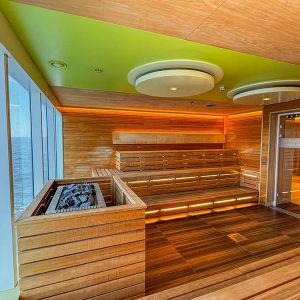I never quite realised the colourful complexity of religious history in southern Spain, how it has shaped the region today and its long-lasting impact on other countries in Europe, and further afield.
Until now.
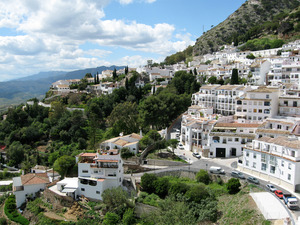 Cosmos Tours’ ‘Discover Andalucia’ tour is a joyful patchwork quilt of history, faiths, culture, food, music and much more from this enchanting area, laid out in front of you in a 7-day feast of the senses.
Cosmos Tours’ ‘Discover Andalucia’ tour is a joyful patchwork quilt of history, faiths, culture, food, music and much more from this enchanting area, laid out in front of you in a 7-day feast of the senses.
Spend the first night near Mijas, to avoid a long transfer from Malaga airport. With its cobbled streets and whitewashed ‘pueblo-style’ houses, this is the perfect start to your Andalucian adventure. Settle in at one of the many restaurants, choose some tapas, guzzle a couple of cold cervezas and banish all thoughts of home as you gaze down at the lights of the Costa del Sol resorts, 430 metres in the hazy distance below.
Andalucia really begins to seduce you when you head to Seville in the morning, the over-developed coastal ribbon soon giving way to rolling hills, olive groves, cultivated fields, occasional wind turbines and ancient hilltop villages.
An African army crossed from Gibraltar in 711, conquered the Iberian peninsula and remained for more than 500 years in ‘Al-Andalus’, although it wasn’t until 1492 – and the fall of Granada – that the Moors were finally expelled from all of modern Spain. With the reconquest of the country by Christian forces, the Muslim Moors retrenched to Africa, but their tenure left an indelible impression, so visible on this well structured tour.
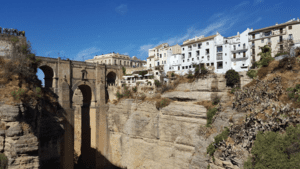 The Sephardic Jews – named after the Hebrew word for Spain – predated the Moors in Spain by centuries, yet they were also faced with a stark choice in 1492: convert to Christianity, or leave the country. Some did convert, some migrated to North Africa, some to northern Europe and others headed east to modern-day Turkey and Greece, then part of the Ottoman Empire.
The Sephardic Jews – named after the Hebrew word for Spain – predated the Moors in Spain by centuries, yet they were also faced with a stark choice in 1492: convert to Christianity, or leave the country. Some did convert, some migrated to North Africa, some to northern Europe and others headed east to modern-day Turkey and Greece, then part of the Ottoman Empire.
The Cosmos holiday lets you spend 3 nights in Seville and 2 in Granada, after the first night in Mijas, with pit-stops along the way in Ronda and Cordoba. And with guided tours by local experts in Seville, Cordoba and Granada, you begin to understand how the exotic pieces of the Andalucian history jigsaw puzzle fit together.
In Seville, 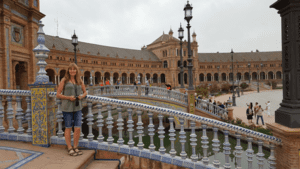 you’ll walk through the narrow alleyways of the Barrio Santa Cruz, once the Jewish quarter and now an atmospheric labyrinth of cobbled streets, bars, restaurants, shops, old palaces and churches. Marvel at the scale of the Plaza de Espana, the centrepiece of the extravagant Latin America International Fair of 1929, hosted by the city, and which even has Venetian-style canals and bridges. Sadly, the Fair coincided with the Wall Street crash, and a global economic crisis and as a result, there were few visitors at the time. Other countries’ grand pavilions also remain – dotted around the peaceful oasis of the Maria Luisa park – but are now repurposed as galleries, museums and offices.
you’ll walk through the narrow alleyways of the Barrio Santa Cruz, once the Jewish quarter and now an atmospheric labyrinth of cobbled streets, bars, restaurants, shops, old palaces and churches. Marvel at the scale of the Plaza de Espana, the centrepiece of the extravagant Latin America International Fair of 1929, hosted by the city, and which even has Venetian-style canals and bridges. Sadly, the Fair coincided with the Wall Street crash, and a global economic crisis and as a result, there were few visitors at the time. Other countries’ grand pavilions also remain – dotted around the peaceful oasis of the Maria Luisa park – but are now repurposed as galleries, museums and offices.
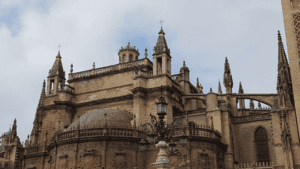 With plenty of spare time in Seville, you will probably want to visit the famous Real Alcazar. The oldest occupied royal palace in the world, it encapsulates all those layers of culture and history inside its castellated ‘mudejar’ walls, from the Moorish epoch through until the 19th century.
With plenty of spare time in Seville, you will probably want to visit the famous Real Alcazar. The oldest occupied royal palace in the world, it encapsulates all those layers of culture and history inside its castellated ‘mudejar’ walls, from the Moorish epoch through until the 19th century.
On the other hand, Seville’s imposing Cathedral – one of the largest Christian churches in the world – replaced the 12th century Almohad mosque, which was destroyed in 1401. Somewhat bizarrely though, the Giralda – the mosque’s minaret – still towers besides the Christian cathedral.
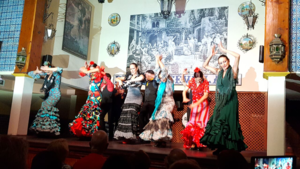 But there’s so much more to do in Seville, other than absorb history and religion.
But there’s so much more to do in Seville, other than absorb history and religion.
We went to the local restaurants and markets of Triana, on the west bank of the wide Guadalquivir river, away from the main tourist haunts; we clapped and wailed along with some authentic flamenco dancing at El Patio Sevillano; we stumbled across some live late night music in a grungy youthful venue, in the authentic Macarena barrio, near the dark Moorish walls. And we ventured west from the city for a ride on Andalucian horses, amongst olive groves and farmland.
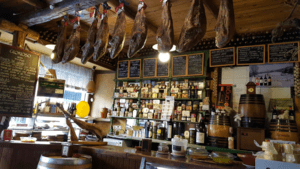 And all the time you’re in this sprawling city, you won’t be far from one of its 14000 orange trees. Bitter and inedible, other than sweetened for marmalade, did you know that a Seville orange has a distinctive double leaf on each stem? Nor did we, until our guide Francisco gave us this tasty insight into one of the city’s defining emblems.
And all the time you’re in this sprawling city, you won’t be far from one of its 14000 orange trees. Bitter and inedible, other than sweetened for marmalade, did you know that a Seville orange has a distinctive double leaf on each stem? Nor did we, until our guide Francisco gave us this tasty insight into one of the city’s defining emblems.
Silver Travel Advisor recommends Cosmos Tours and Cruises

